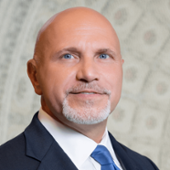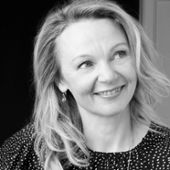Agenda
Timings are in British Summer Time (BST)
To view start times in your local time zone, please click here.
-
Moderator
-
Welcome and introduction
- Session 1: Experiences with substituting PFASs from different sectors
-
Plasma coatings for PFAS free packaging containers
- Why do we need barrier coatings for plastic packaging?
- What kind of PFASs are used today?
- How does the plasma coating work?
- Where can we apply the coating?
-
An analysis of PFAS usage and unique applications facing the aerospace and defence industry
- Unique challenges for A&D
- Examples of PFASs in A&D derived from industry data (2020)
- Special concerns – synthetic aqueous firefighting foam (AFFF)
.png) Michael G Anderson
Principal Engineer, Corporate Energy, Environment, Safety & Health Advocacy Lead, International Aerospace Environmental Group (IAEG)
Michael G Anderson
Principal Engineer, Corporate Energy, Environment, Safety & Health Advocacy Lead, International Aerospace Environmental Group (IAEG) -
PFASs in outdoor apparel and other textiles: Why are NGOs, regulators, and businesses concerned?
- Recent studies investigating PFASs in textiles – key findings
- Examples of businesses substituting PFASs in textiles
- Recent state action on PFASs in textiles
-
Panel discussion
Lessons learnt so far for replacing PFASs based on today’s technology
-
Lunch
-
Chemical Watch demo 12.20-12.40
- Session 2: Complexity of decision making around PFASs and the essential use debates
-
Moderator
-
Three members of FPP4EU, a Cefic sector group, present case studies
-
Focus on a vital application: The cancer medicine Sorafenib in Nexavar®
- Discussion of Sorafenib
- Benefit and essentiality
-
The science of substitutes: search for PFAS alternatives
 Natasa Sbrizaj
EMEA Regulatory and Government Affairs Manager for Environment and Sustainability, 3M
Natasa Sbrizaj
EMEA Regulatory and Government Affairs Manager for Environment and Sustainability, 3M -
F-gases' contribution to the safe progress of essential refrigeration and heating applications in Europe
- Market context
- Refrigerants’ safety classification and terminology
- Industry standards' directions
- Representative applications
- Conclusions
-
Fluoropolymers: Concerns and necessity
- How did we arrive at a restriction proposal this wide? PFOA and regrettable substitution
- Responsible manufacturing of fluoropolymers – abatement and non-fluorinated surfactant replacement
- Fluoropolymers are ’polymers of low concern' – OECD criteria
- Fluoropolymers are 'polymers of necessity'; – evaluation of alternatives
-
Opportunities for pollution prevention: Safer products for Washington’s approach to PFAS regulation
- Programme goals
- PFAS-containing products under evaluation
-
How to assess what is essential use and what is not with PFASs as a case study
- Great potential to make regulation more efficient but needs to be clear and predictable
- When is it justified to use the most harmful chemicals?
- PFAS use can be seen as essential for a small fraction of products
- For the rest, this is a golden opportunity for producers of safer alternatives
-
Panel discussion
Essential use debates for PFASs
-
Break
- Session 3: Bringing together different approaches to regulation, including implementation and enforcement
-
Moderator
-
The need to consider implementation of the restrictions, analytical methods for groups of PFAS and chemical standards to support the documentation of compliance, enforcement and risk assessment
-
The Danish ban of PFASs in paper and board food contact materials (FCMs)
- Introduction to the Danish legislation concerning PFASs in paper and board FCMs
- Enforcement of FCM legislation in Denmark – analysis and inspections
- Recent analytical results for PFASs in paper and board FCMs
-
EU regulatory update: Overview of ongoing and upcoming policy steps towards stricter and more effective regulation of PFAS in the EU
- How well are PFASs currently regulated in the EU? Overview of existing EU measures (drinking water Directive, REACH restrictions, CLP etc)
- The commitment to address PFASs as a group under the EU chemicals strategy for sustainability
- Zoom in on ongoing REACH activities: PFHxA; PFAS in fire-fighting foams and the ’universal' PFAS ban
-
UK regulatory updates on PFASs
.png) Edward Latter
Chemicals Policy Team Leader, Department for Environment, Food and Rural Affairs (Defra), UK
Edward Latter
Chemicals Policy Team Leader, Department for Environment, Food and Rural Affairs (Defra), UK -
PFASs: A diverse universe of chemistry that enables modern technology
- What are PFASs and why are they important?
- All PFASs are not the same
- Discussion of latest research/science on differences between chemistries
- Discussion of performance attributes/alternatives
- Legislative and regulatory initiatives/outlook
 Robert J. Simon
Vice President, Chemical Products & Technology Divisions, American Chemistry Council
Robert J. Simon
Vice President, Chemical Products & Technology Divisions, American Chemistry Council -
DTSC’s Safer Consumer Products Program’s (SCP) PFAS
- A brief overview of the SCP regulatory framework and how DTSC has taken a class approach to regulating PFAS-containing consumer products
- An overview of PFAS-containing consumer products DTSC has evaluated/regulated
- DTSC’s approach to compliance testing, enforcement and challenges
- PFAS alternatives
- Legislative action in California on PFAS-containing products
-(002).jpg) André Algazi
Manager, Chemical and Product Evaluation Branch, California Department of Toxic Substances Control
André Algazi
Manager, Chemical and Product Evaluation Branch, California Department of Toxic Substances Control -
Panel discussion
Comparison of different definitions, approaches, experiences with implementation and enforcement
-
End of conference


.jpg)


.jpg)

.jpg)
.jpg)
.png)


.jpg)
.jpg)